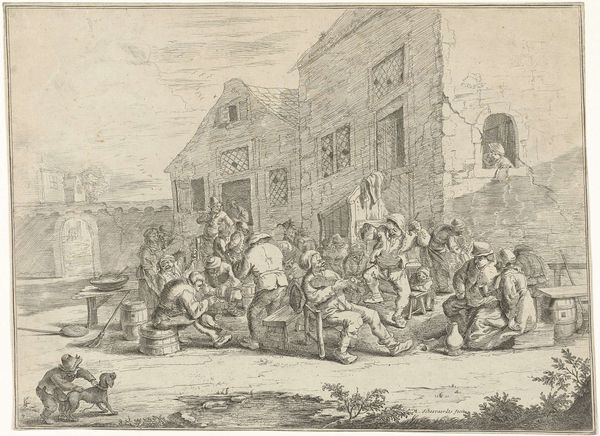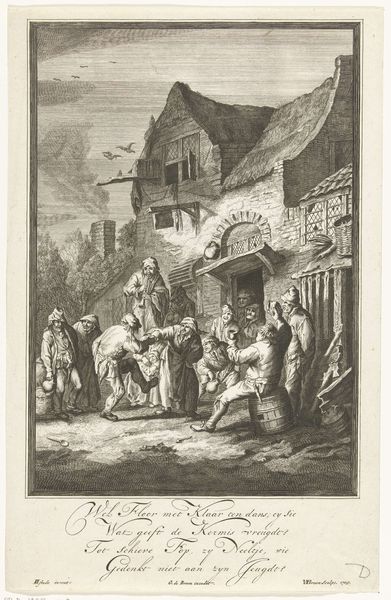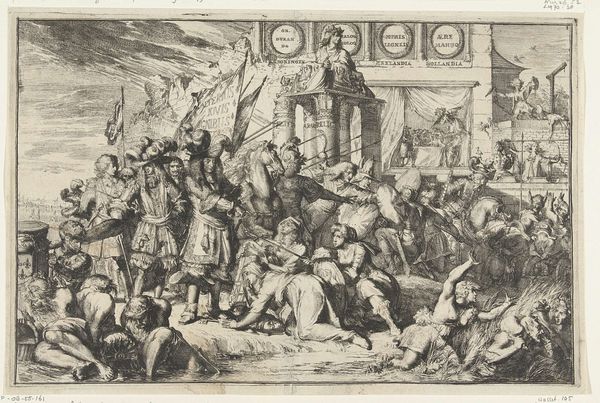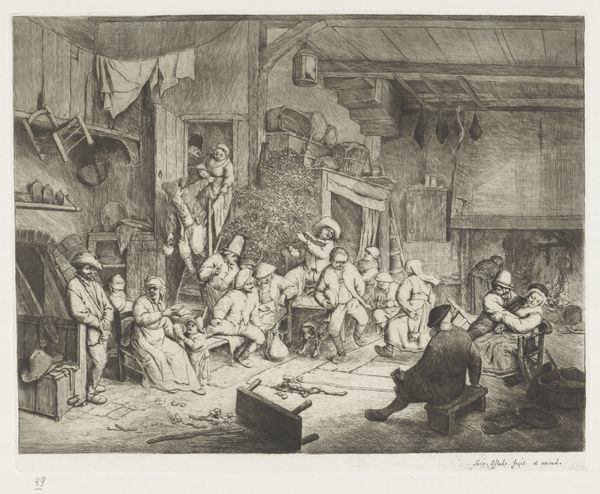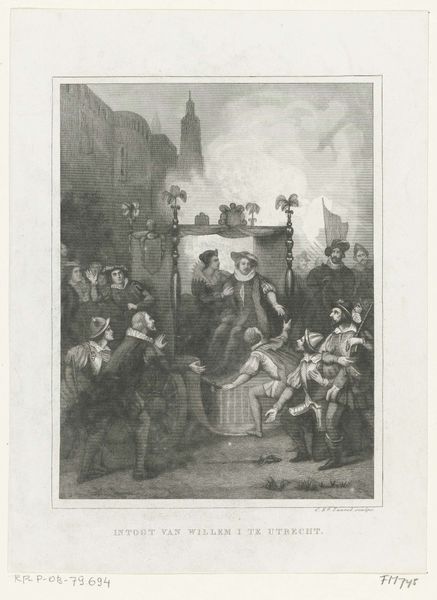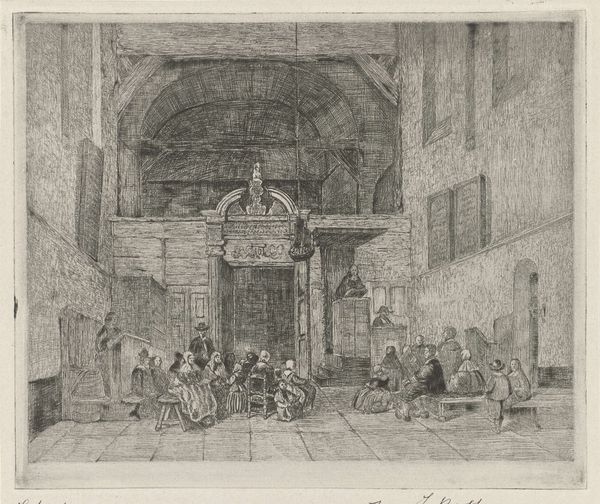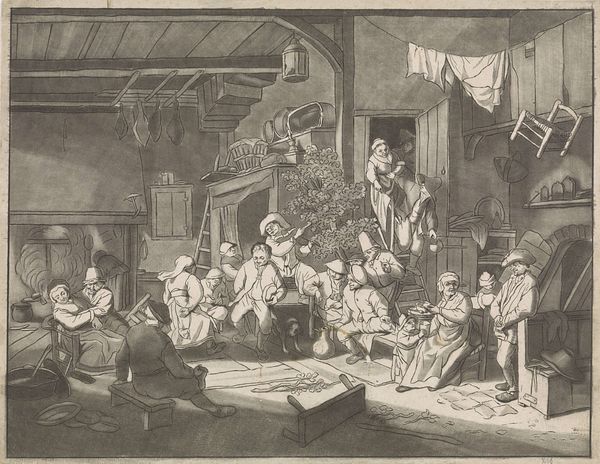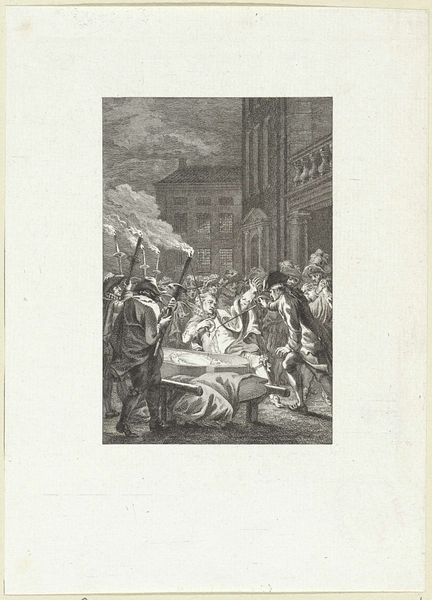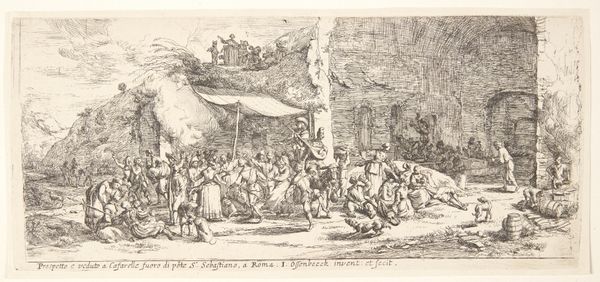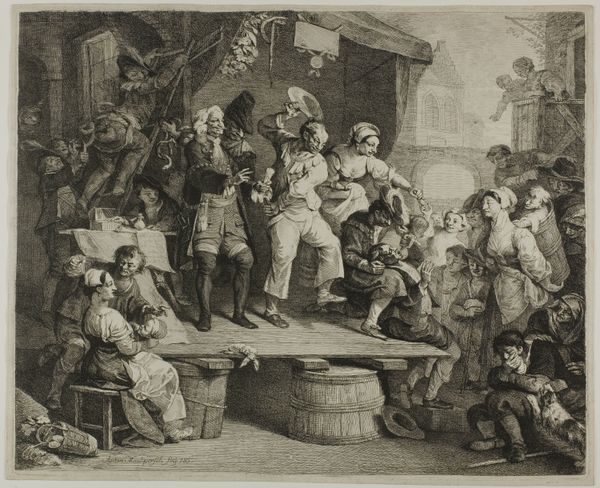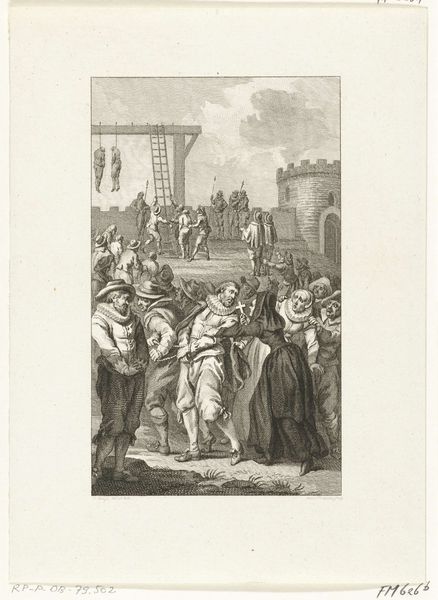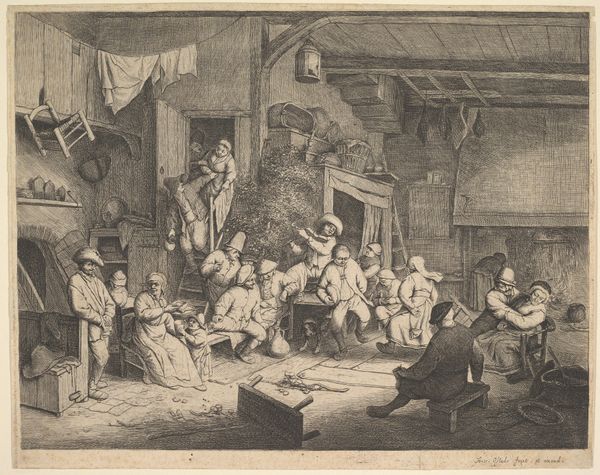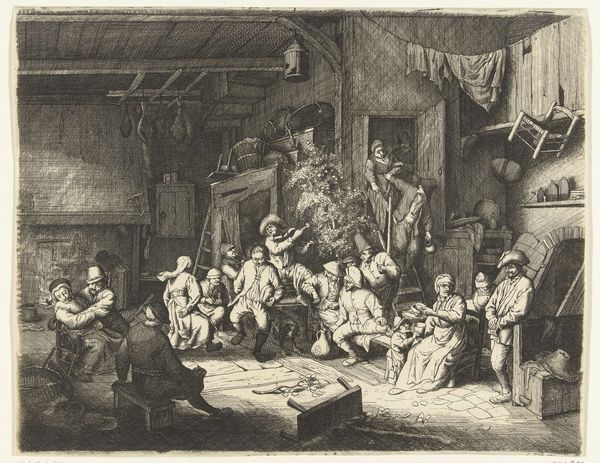
print, etching
#
narrative-art
#
dutch-golden-age
# print
#
etching
#
figuration
#
genre-painting
Dimensions: height 245 mm, width 320 mm
Copyright: Rijks Museum: Open Domain
Editor: So this etching, "Dance in the Inn" by Adriaen van Ostade, made sometime between 1650 and 1654, really feels like a slice of daily life. It’s incredibly detailed for a print. What do you see in this depiction of Dutch Golden Age revelry, focusing on the everyday materials and conditions of the working class? Curator: Well, let’s start with the 'means of production', so to speak. Ostade has chosen etching. An intaglio process involving considerable physical labor. Why that process, to represent this subject? Think about what this choice signifies when contrasted with the subject matter: celebrating labor through representing the labor involved to produce this print. Editor: That's interesting, it’s sort of a double labor... and that level of detail. It is unexpected in an inn setting. The clothes hanging up, the ramshackle building. He doesn't romanticize things. Curator: Exactly! He shows the material reality of their lives. The image celebrates, but also exposes, the inherent material realities of a society where revelry is directly born of that labor, even 'produced' through those material conditions. It questions the traditional divide between "high" art, which would depict noble scenes or landscapes, and this so-called "low" subject. Where is art placed socially? Who dictates these labels, "high" and "low", through consumption? Editor: So he's showing the direct connection between their work and their leisure through this kind of…meta-process. Seeing labor and leisure coexisting that way… I never really thought about the materiality of social class. Curator: Precisely! This etching makes us consider the lives of these figures not as isolated moments of pleasure but also related to the materials of their clothes, houses, and the art. Editor: Okay, I’m starting to think about these historical techniques like weaving and construction beyond art history! Curator: That's great! Now, let’s think how consumer demand for 'genre scenes' impacted artistic creation and shaped our views about 17th century Netherlands' people.
Comments
No comments
Be the first to comment and join the conversation on the ultimate creative platform.
